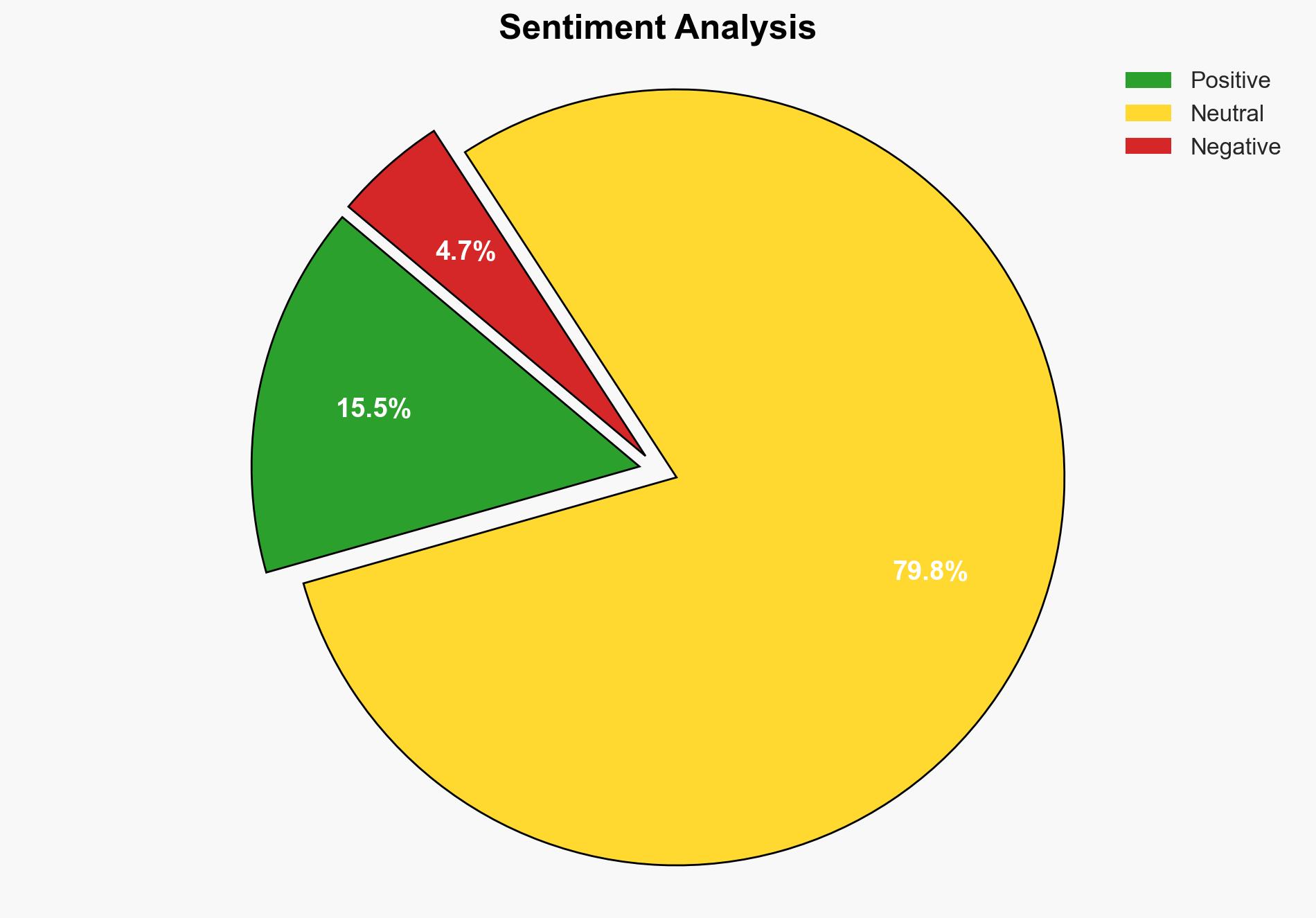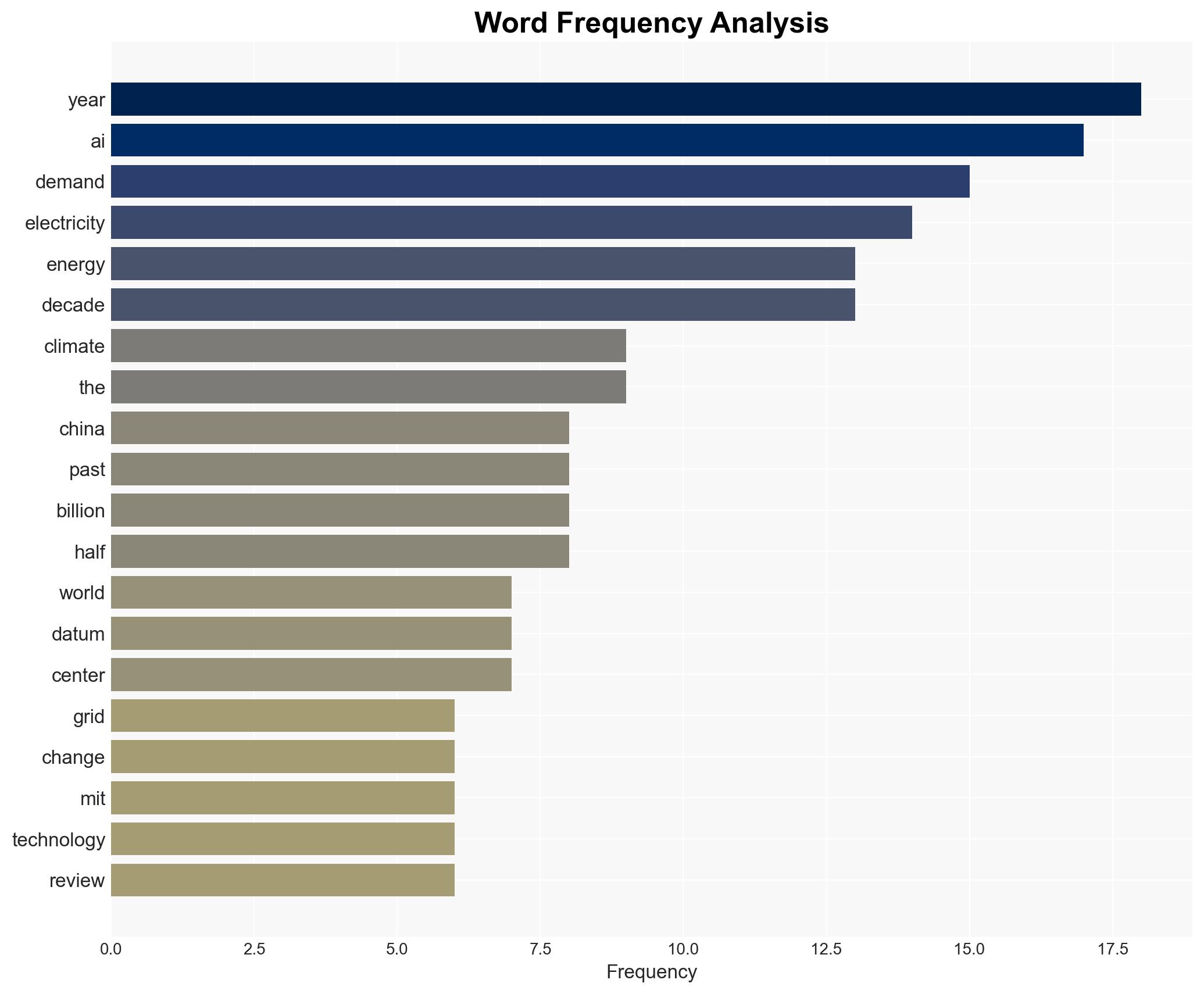Three things to know about the future of electricity – MIT Technology Review
Published on: 2025-11-20
AI-powered OSINT brief from verified open sources. Automated NLP signal extraction with human verification. See our Methodology and Why WorldWideWatchers.
Intelligence Report: Future of Electricity and AI Integration
1. BLUF (Bottom Line Up Front)
The integration of AI and the shift towards renewable energy sources are poised to significantly transform the global electricity landscape. The most supported hypothesis is that AI-driven data centers will substantially increase electricity demand, necessitating accelerated investment in renewable energy infrastructure. Confidence Level: Moderate. Recommended action includes prioritizing the development of renewable energy sources and enhancing grid resilience to accommodate increased demand.
2. Competing Hypotheses
Hypothesis 1: AI-driven data centers will lead to a substantial increase in electricity demand, outpacing the growth in renewable energy capacity, thereby exacerbating reliance on fossil fuels.
Hypothesis 2: The growth in AI-driven electricity demand will be effectively managed by accelerated investments in renewable energy and grid modernization, leading to a sustainable energy transition.
Hypothesis 2 is more likely due to global trends in renewable energy investment and policy shifts towards sustainability, despite current reliance on fossil fuels.
3. Key Assumptions and Red Flags
Assumptions: Global investment in renewable energy will continue to rise; AI technology will proliferate at the projected rate; policy frameworks will support energy transitions.
Red Flags: Potential underestimation of AI-driven demand growth; geopolitical instability affecting energy supply chains; inadequate policy responses to climate change.
4. Implications and Strategic Risks
The increased electricity demand from AI could strain existing grids, leading to potential blackouts and increased greenhouse gas emissions if not managed with renewable energy. Economic risks include increased energy costs and potential disruptions in energy supply. Politically, failure to meet energy demands could lead to public discontent and policy backlash. Cyber risks include vulnerabilities in smart grid technologies.
5. Recommendations and Outlook
- Accelerate investment in renewable energy infrastructure and grid modernization to meet rising demand.
- Enhance cybersecurity measures for smart grids to prevent potential attacks.
- Engage in international cooperation to stabilize energy supply chains and share best practices.
- Best-case scenario: Successful integration of AI and renewables leads to sustainable energy growth.
- Worst-case scenario: Energy demand outpaces renewable capacity, increasing reliance on fossil fuels.
- Most-likely scenario: Gradual transition with intermittent challenges in grid management and energy policy adaptation.
6. Key Individuals and Entities
International Energy Agency (IEA) – Key in providing global energy outlooks and influencing policy.
7. Thematic Tags
Cybersecurity, Renewable Energy, AI Integration, Energy Policy
Structured Analytic Techniques Applied
- Adversarial Threat Simulation: Model and simulate actions of cyber adversaries to anticipate vulnerabilities and improve resilience.
- Indicators Development: Detect and monitor behavioral or technical anomalies across systems for early threat detection.
- Bayesian Scenario Modeling: Quantify uncertainty and predict cyberattack pathways using probabilistic inference.
Explore more:
Cybersecurity Briefs ·
Daily Summary ·
Support us





